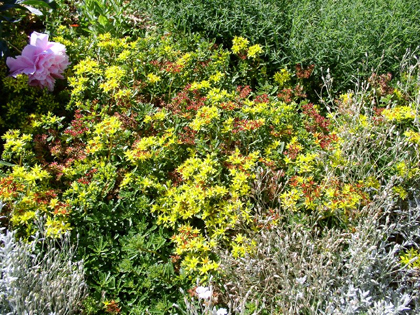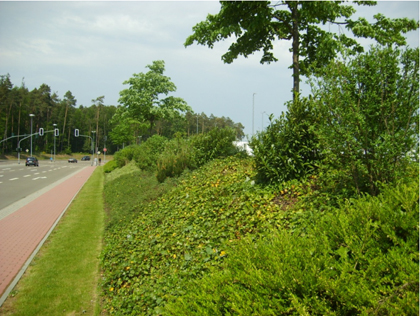
Low maintenance groundcovers prevent erosion, slow storm water
runoff velocity, improve aesthetics and minimize landscape
maintenance costs. Low maintenance groundcovers are plants that do
not require trimming due to their low grow height and little need of
supplemental irrigation or fertilizing. Many
groundcovers also control weed growth and add nutrients to the soil.
This landscaping strategy is often implemented as a replacement for
large turf areas such as a golf course.

Figure 1. Russian Stonecrop (perennial) is an excellent low maintenance ground cover
Ground covers typically require watering and weeding during the
first year of growth but are self-sustaining thereafter. Various
types of clovers, mosses, flowers, low-growing shrubs and ornamental
grasses are often implemented as ground cover. Selection of the
appropriate groundcover should take sun and water requirements into
account as well as the intended use. For example, some plant species
do not hold up well to high traffic areas. Many groundcovers will
also require some type of containment to prevent growth from
spreading beyond the intended area.
Mow strips are an effective
method to limit growth of low-growing plants. It is also critical to consider soil amendments for optimal performance of this sustainable design strategy.

Figure 2. Low maintenance ground cover at Ramstein AB
Low maintenance groundcovers are a potential method
to achieve the intent of LEED SS
Credit 6.1, SS
Credit 6.2, WE
Credit 1.1 and WE
Credit 1.2. Refer to the LEED Guidance section
for specific requirements.

|

